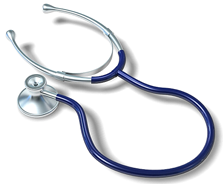Our Services

Diagnostic services offered and/or directly interpreted by Dr. Alluri include:
Comprehensive neurological examination the neurological examination tells us the location of disease and allows us to focus our diagnostic testing to a specific area of the nervous system. Neurological examination includes physical examination and testing various functions of nervous system. In addition to a routine physical assessment, the neurological examination should evaluate mental status, motor system, sensory perception, deep tendon reflex, cranial nerve function.
EMG (electromyography).Electromyogram (EMG) measures the electrical activity of muscles at rest and during contraction (activity). Electromyography is a technique for evaluating and recording the electrical activity produced by skeletal muscles. EMG is performed using an instrument called an electromyograph, which produce a result as electromyogram. An EMG is done to find diseases that damage muscle tissue, nerves, or the junctions between nerve and muscle, the causes of weakness, paralysis, muscle twitching etc.
A nerve conduction study (NCS) is a test commonly used to evaluate the ability of electrical conduction, of the motor and sensory nerves in human.A nerve conduction study is done to measure how well and how fast the nerves can send electrical signals and to find damage in the peripheral nervous system, which includes all the nerves that lead away from the brain and spinal cord and the smaller nerves that branch out from those nerves. This test is often used to help find nerve problems such as carpal tunnel syndrome or Guillain-Barré syndrome. Nerve conduction velocity (NCV) is a common measurement made during this test.
Electroencephalography (EEG) is a measure of brain waves. It refers to the recording of the brain's spontaneous electrical activity over a short period of time, recorded from multiple electrodes placed on the scalp. It is a readily available test that provides evidence of how the brain functions over time. The EEG is used in the evaluation of brain disorders, especially the activity in the brain during a seizure. It also is used to evaluate people who are having problems such as confusion, coma, tumors, long-term difficulties with memory, weakness in specific parts of the body which are associated with brain function.
Videonystagmography (VNG) is a series of tests used to determine the causes of dizziness, vertigo, gait abnormalities and balance disorders. VNG is a complete diagnostic system for recording, analyzing and reporting involuntary eye movements, called nystagmus, using video imaging technology.VNG is a test used to determine whether or not dizziness may be due to inner ear disease.
Ultrasonography/ Doppler studies: is a non invasive diagnostic procedure that changes sound waves into an image that can be viewed on a monitor.The purpose ultrasonography is to detect the direction, velocity, and turbulence of blood flow. It is frequently used to detect problems with heart valves or to measure blood flow through the arteries. Early diagnosis help in the prevention of major neurological problems such as stroke.
Carotid Ultrasound Examination: Carotid ultrasound is a non-invasive diagnostic examination used to evaluate the condition of the major arteries in the neck. These arteries, called the Carotid arteries supply the brain with blood. Various abnormalities can be detected by carotid ultrasound. These abnormalities can be mild, such as hardening of the wall of the carotid arteries, to severe such as large plaques that obstruct the blood flow. During the examination, an ultrasound transducer will be placed on an area of the neck over the arteries, producing an image displayed on a video screen. This test will take approximately 30 minutes, and is completely painless.
Echocardiogram: is a noninvasive diagnostic ultrasound examination to evaluate the heart chambers, valves, and function. It is done by placing an ultrasound transducer over the chest. The test uses sound waves to create a moving picture of the heart. The image generated is detailed than a plain x-ray image and involves no radiation exposure. Further no preparation time is necessary of this examination.
Computerized memory testing allows formal and objective way to evaluate patients with reduced concentration, memory loss and/or poor job performance.
 Alzheimer's Disease
Alzheimer's Disease